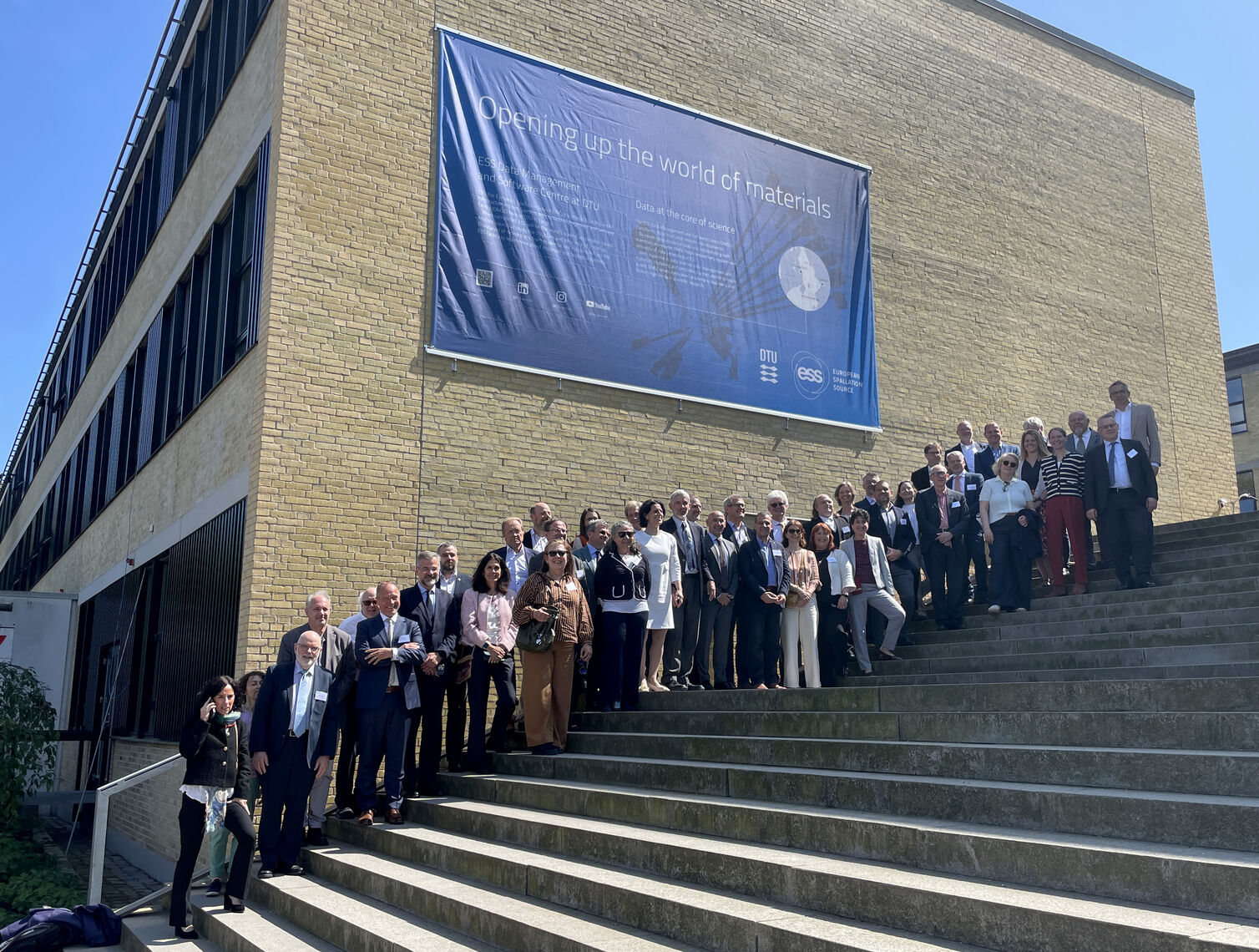
For the first time, the ESS Council convened at the ESS outstation situated at the Technical University of Denmark (DTU) campus in Lyngby, just outside Copenhagen – home to the ESS Data Management and Software Centre (DMSC). Holding the meeting at DTU, together with a visit to the DMSC facilities, highlighted the close collaboration between Sweden and Denmark as host countries and their shared commitment to the success of ESS. This was further emphasised in the welcome speeches by DTU President Anders O. Bjarklev and Mikkel Leihardt, Director General of the Danish Agency for Higher Education and Science.
A celebration of a landmark moment
The Council congratulated the ESS Management and entire organisation for reaching the critical milestone of Beam on Dump – a defining moment in the commissioning of the ESS accelerator. This achievement marks the first time protons have been accelerated to full energy and successfully transported through the entire accelerator and beam transport line to the tuning beam dump. It represents not only technical progress but also a collective accomplishment made possible by years of collaboration, commitment and perseverance from ESS staff and partners across Europe.
Preparing for the next phase
The Council and ESS Management underscored the critical importance of maintaining full momentum to achieve upcoming milestones within a timeframe that reflects ESS’s commitments. This focus is particularly significant for the "Beam on Target" milestone, currently forecast for February 2026, as well as the broader transition from the project phase to Steady State Operations (SSO). To support this transition, ESS Management informed the Council of the establishment of a dedicated sub-project aimed at assisting the ESS directors in their responsibility to successfully navigate this complex shift. The initiative will provide vital project management expertise to ensure a controlled and efficient progression from construction to operations. The transition to SSO is not solely about systems and timelines; it is a holistic effort encompassing people, processes, and the preparation of the organisation for sustainable, long-term operations.
Financial and strategic alignment
The Council reviewed the updated Medium-Term Financial Estimates (MTFE), which, for the first time, included budget estimates for the operational phase (2028 to 2030). The Council endorsed the presented figures as a solid foundation for strategic planning and as a basis for future negotiations on cost-sharing among Member States.
The Council also reaffirmed the critical importance of achieving a timely solution for the sustainable management of ESS’s future radioactive waste. This was recognised not only as essential for mitigating a major project risk but also as a cornerstone of long-term responsibility and operational readiness.
Decisions and approvals
Several important decisions were taken during the meeting:
- The ESS Annual Report for 2024, including the audited Statutory Report, was approved. The Council also discharged the Director General from liability for the 2024 financial year.
- Council approved a new set of In-Kind Contribution (IKC) agreements, as recommended by the In-Kind Review Committee (IKRC) during their 31st meeting.
- The ESS Scientific Evaluation and Access Policy was formally adopted – a vital policy supporting the future operation of the facility. Council also approved an updated version of the ESS Policy for Scientific Data, now fully aligned with the PaNOSC framework for FAIR data.
- The Project Advisory Committee (PAC) Chair and eight members were re-appointed for a one-year extension of their mandate.
A closer look at DMSC
In today’s digital landscape, the role of DMSC in advancing the success of ESS’s scientific mission cannot be overstated. Council members were introduced to DMSC’s mission by its Head, Thomas Holm Rod, and subsequently had the invaluable opportunity to meet DMSC staff. They witnessed firsthand the remarkable progress and capabilities demonstrated by the ESS DMSC teams across the entire experimental workflow—from the submission of beam time proposals to the sophisticated analysis of collected data. These efforts are underpinned by cutting-edge computational advancements, including the integration of Artificial Intelligence.
As part of their visit to DMSC, Council members attended a lecture by Professor Tejs Vegge on Data Analysis in the Field of Materials Science, offering valuable insights into the scientific challenges and transformative opportunities that ESS is poised to support. The Director General reiterated his hope that, with the completion of the facility's premises, which provide an exceptional work environment, collaboration with the local academic community at DTU can be further strengthened. Such enhanced collaboration will enable ESS to fully capitalise on these opportunities, benefiting from DMSC’s unique location.



























